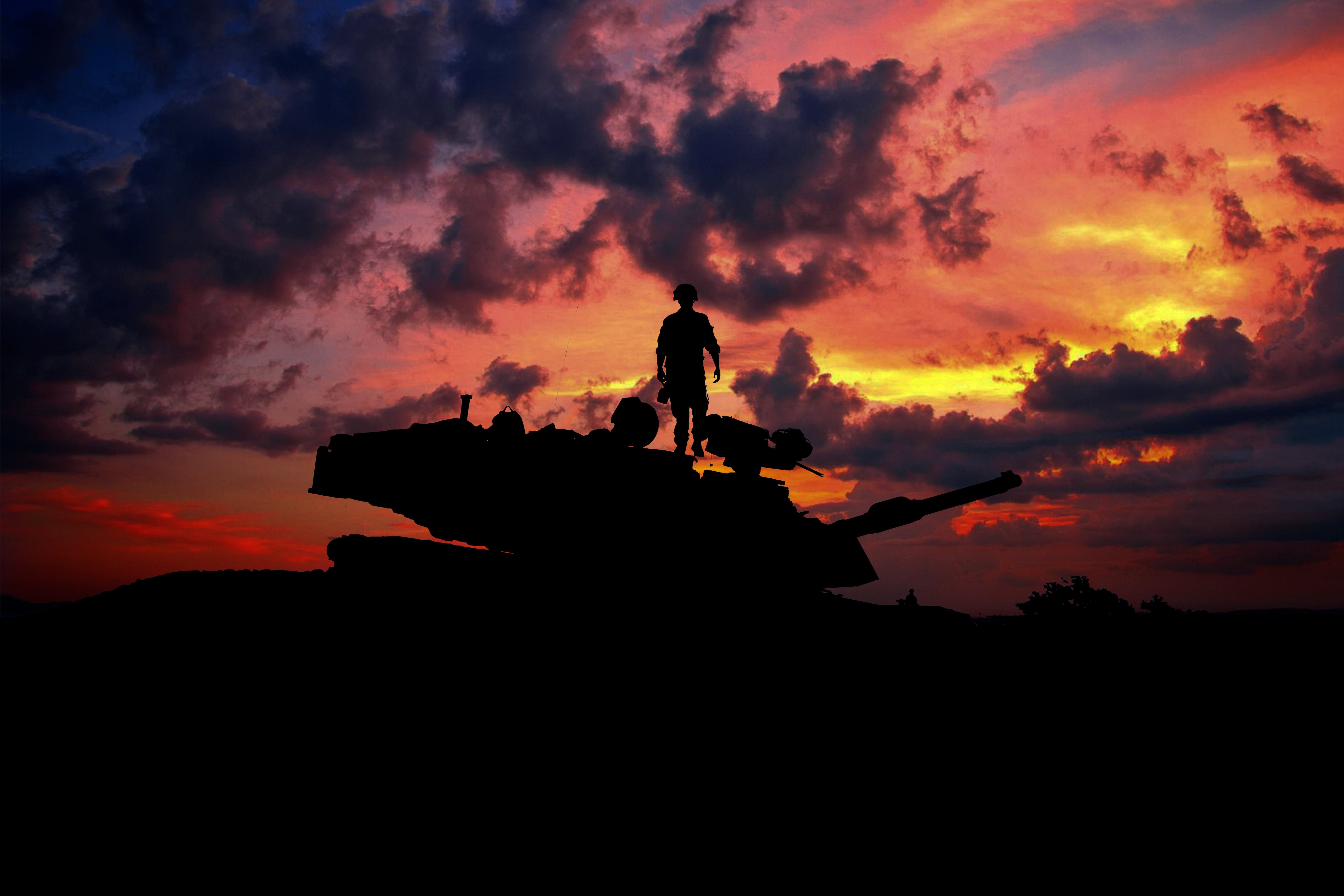Editor’s Note: If you or a loved one is experiencing thoughts of self-harm or suicide, you can confidentially seek assistance via the Military/Veterans Crisis Line by calling 988 and dialing 1, via text at 838255 or chat at http://VeteransCrisisLine.net. You don’t need to be a VA beneficiary to use the service.
Collin Pattan remembers the winter of 2020.
Before the first snow blanketed Fort Carson, Colorado, two members of the Iron Knight battalion were dead: Sgt. Larry Cook, a tanker, died by suicide in April, and Spc. Brian Seely, an intel analyst, killed himself in June.
In total, six soldiers from 1st Battalion, 66th Armor Regiment died by suicide in 14 months.
Pattan, a combat medic, now screens soldiers’ medical records for his brigade’s upcoming deployment to Europe. He sees the scars from that winter. He reads about the struggles with mental health. He knows the toll the job can take.
More than three years later, he still can’t answer unexpected calls. When the phone rings, he’s gripped with fear: is another soldier dead?
The 27-year-old sergeant now faces a medical retirement for PTSD after his soldiers died, after he cleaned their blood from the carpet and after he interrogated himself over whether he could have done more.
Between 2019 and 2021, tank brigades experienced a suicide rate twice as high as the rest of the active duty force, according to an Army Times analysis of death records. At least 79 soldiers assigned to active duty Armored Brigade Combat Teams — units of approximately 4,000 soldiers that include support troops like cooks in addition to their tanks and Bradleys — killed themselves. Across all unit types, enlisted tankers were three times as likely to die by suicide than other soldiers. Sixteen died by suicide during that three-year period.

Retired Gen. Robert “Abe” Abrams, a career armor officer, said the suicide numbers hit him “square in the gut.”
“The armor force needs to train hard to be ready,” he said. “But it cannot sustain that tempo indefinitely so that every 18 months, they can be gone for nine months. That’s what’s crushing them.”
In interviews with Army Times, more than 60 soldiers from tank brigades described a high operational tempo — a loosely defined term that encompasses time spent away from home for training or deployments. The soldiers said they endured countless late nights and early mornings maintaining vehicles only for them to break repeatedly amid training. And they said the unforgiving pace of work suffocated the spirit of those around them.
For a decade, U.S. tank brigades have been in high demand overseas, even though they’re not fighting.
Perhaps nowhere was the strain felt more than 1st Battalion, 66th Armor.
“I just thought it was normal, growing up in this unit,” said Staff Sgt. Colton Herzing, a tanker who has spent his entire seven-year career in the unit. “I thought the OPTEMPO was normal. I thought the suicide rate was normal.”
The Pentagon’s stated — but rarely enforced — goal is for soldiers to spend three months at home for every one month deployed. Abrams, whose father’s name adorns the military’s tanks, argued that armor units cannot indefinitely sustain their operational treadmill of two months at home for each month deployed unless the Army is willing to pour more resources than it already has into manning, equipment and support.
Randy Lane, who heads the Army’s data work for suicide prevention and similar programs, confirmed that enlisted tankers suffered the worst suicide rate of any high-population career field during the three-year period. He also acknowledged higher suicide rates for members of armor and Stryker brigades, but added Army databases are “not set up to account for brigade type.”
Army secretary Christine Wormuth said in a statement to Army Times that “suicide prevention remains a challenge.”
“Gen. [Randy] George and I recognize there are several contributing factors to suicide and that we need to tailor our prevention efforts based on specific factors at the unit level,” she said. Wormuth added that she and George review suicide prevention efforts with senior commanders “on a nearly monthly basis … [to] assess progress and identify areas for improvement.”
While Army leaders pointed to a series of suicide prevention programs in place, none are aimed specifically at the problems raised by tank units’ operational pace.
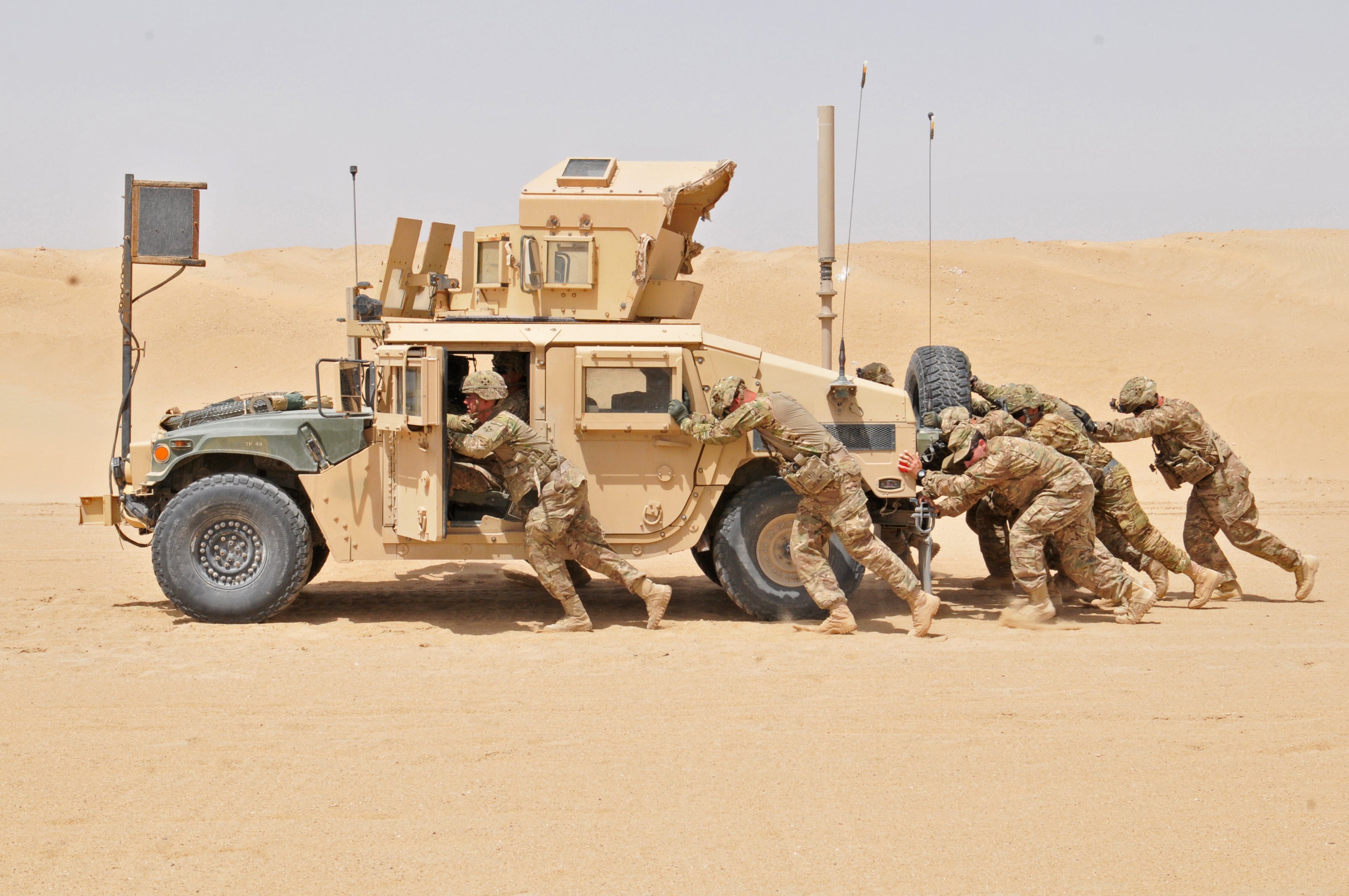
Sgt. Maj. Michael Perry, the top enlisted advisor to the Army’s head of installations and quality of life programs, acknowledged that brigade combat teams have been “deploying a lot” despite the gradual end to the War on Terror.
“There is no denying that OPTEMPO … [places] a significant strain on our force and on our families,” Perry said, emphasizing the need for support resources to reduce suicides and other harmful behaviors.
An Army public affairs official did not allow Perry to answer a question about what the service was doing to address the problem specifically for armor units.
Doing so may require looking inward.
Abrams argued the problem is rooted both inside and beyond the Army, but he emphasized that the service can do more.
The retired general said armor units must meet strict requirements — called “business rules” — set by geographic combatant commands for units embarking on non-combat deployments to their theater. Among other criteria, units cannot have too many vacant positions, a certain percentage of their vehicles must be operational and they must be trained to a high standard.
To make the cut, senior commanders often shuffle soldiers and leaders between chronically undermanned units, harming their cohesion. Abrams added that the strain is compounded by constant backlogs on vehicle parts as well.
“It’s like trying to prepare the force with one arm tied behind your back,” Abrams said. Despite Army efforts to mitigate the rules’ impact, “we were still crushing people,” the general added.
A growing vein of suicide prevention research suggests that baseline stress in a population — such as operational tempo for armor brigades — can raise the entire group’s suicide risk. Mental health experts say the military has been slow to embrace this new approach.
Army expert Lane said the service requested a research study in spring 2023 about whether its new readiness and deployment model has increased suicide risk for armor units. But for nearly a year, the Army has struggled to find a partner for the study.
Lane also conceded that officials have neither “enough data nor the agreed upon definition” to analyze the relationship between operational tempo and suicide risk.
While Army headquarters struggles to pin down the problem, the soldiers on the line bear its consequences.

The soldiers of 1st Battalion, 66th Armor said they didn’t have a chance to pause and process the deaths from 2020 and 2021. Training never stopped. Maintenance never stopped.
Roughly every 18 months, the 4th Infantry Division’s 3rd Armored Brigade Combat Team, of which they were a part, had deployed for nine months. In 2015, it was Kuwait. In 2017, the Iron Brigade went to Europe. In 2019, Kuwait was the destination again. Another Europe deployment came in 2022, and the brigade will return to the continent this spring.
The soldiers were already bone-tired when the pandemic began, said Capt. Nick Bierwirth, who spent three-and-a-half years there as a lieutenant. He and other soldiers, such as former Sgt. Dan Lewis, described the relentless cycle.
“I would bring my daughter in at night when she wouldn’t sleep, because I wanted to see my family,” recounted Capt. Dave Wright, an infantry officer who served four years in 1-66.
Because COVID took months away from their training calendar, the brigade’s soldiers were away from home more often than usual once restrictions were lifted. The Iron Knights described those months as the most difficult training cycle they had ever experienced, detailing how back-to-back field exercises took a toll on their tanks, their bodies, their families, their mental health and more.
Exhausted, frustrated and already shaken by two suicides (Cook, the tanker, and Seely, the intel analyst), the unit was on the brink when November 2020 began.
The winter was cruel.
The day Sgt. Aaron Pollitt died, the 28-year-old infantryman was doing what he did best: caring for those who mattered to him — his wife, his daughter and his soldiers.
A nine-year veteran, Pollitt came up in the battalion’s Bradley company before becoming a master gunner in the headquarters company.
On Nov. 6, 2020, Pollitt was driving a junior soldier home from work when he lost control of his SUV and careened across the median of Interstate 25 into a garbage truck.
Pollitt died. His passenger survived. The gregarious infantryman’s death was not a suicide, but it sent shockwaves through the battalion.
“That was definitely … where things became very difficult for our unit,” Pattan said.
Five days later, the unit suffered its third suicide of the year. Sgt. Cody Kane, a 24-year-old infantryman and father, killed himself in his Fountain, Colorado home on Nov. 11, 2020.
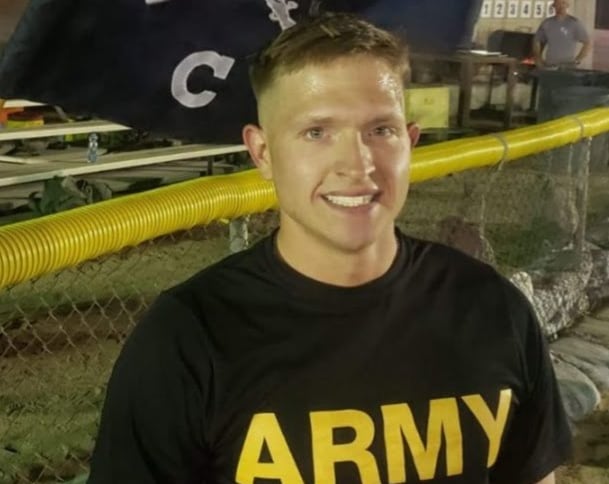
Kane’s colleagues recalled the infantryman blaring “Baby Shark” to raise spirits before he and his tent-mates embarked on a long range day during the unit’s 2019 Kuwait deployment.
“I was his senior medic,” Pattan recalled. “I looked at it as my job to take care of these guys, and I had two people die in a week.”
But training had to continue — Kane’s Bradley company went to the field the day after his suicide. Pattan watched his company commander and first sergeant unsuccessfully fight against the decision.
Then, Spc. Wyatt Thyfault died on Nov. 22. His was the fourth suicide.
Thyfault, a 20-year-old combat medic who grew up northeast of Denver, was at a party at a fellow soldier’s apartment when he died; his casualty form deemed it self-inflicted. Investigative records reveal he was intoxicated and had easy access to another soldier’s unsecured firearm, though nobody faced charges.
The medic’s portrait still hangs in the company headquarters, Herzing said.
Pattan, who was Thyfault’s squad leader, recalled his survivor’s guilt intensifying.
“I got rid of the couch that he was sitting on. I cleaned the carpet. I repaired the bullet hole in the wall,” Pattan said. The Pentagon’s suicide prevention committee later found that soldiers should not clean death scenes.
The battalion’s soldiers, after three deaths in three weeks, charged headlong into holiday block leave season.
But they returned to news of the fifth suicide since April. Pvt. Sean Teasley, who killed himself at his family’s Maryland home on Dec. 29, 2020, still evokes mixed feelings from the soldiers of Battle Company.
The 21-year-old tanker was known as the “kid” of the company, Herzing recalled.
When the unit returned from leave, an officer said, their battalion and brigade “surged” resources to help them cope.
Then everyone learned that Teasley was under criminal investigation for alleged child sexual abuse — police interrogated him shortly before his death. “Once the news broke, it was like, ‘OK, go back to work,’ and people were still fucking struggling,” the officer recalled.
Almost six months passed between Teasley’s death and the sixth suicide.
Sgt. Bayaman Michael Barcus killed himself in front of his girlfriend after a violent outburst following a concert in San Antonio, Texas, on June 13, 2021.

A 24-year-old childhood immigrant from Kyrgyzstan, Barcus grew up in North Georgia. The young father, a sniper in the headquarters company, loved country music and drove a lifted Chevrolet K10.
After Barcus died, Pattan recalled that he “shut down.” He skipped his friend’s memorial, hellbent on “avoiding the problem” lest his own mental state deteriorate further.
Others were in a similar headspace.
“I was at the point where driving off a cliff on the way to work would have been as good as showing up to work,” said one officer. One noncommissioned officer said he called a suicide hotline.
“Looking back … it was like surviving,” Pattan said.
The stress from the unit’s training tempo was compounded by their seemingly futile battle to keep their vehicles running, the Iron Knights said. Members of other armored units described similar struggles.
Soldiers regularly worked nights and weekends in the motorpool, they said. Former Spc. Garrett Shiemke, a Bradley mechanic, said the maintainers turned wrenches even on so-called “mandatory fun days,” when the rest of the unit would participate in morale-boosting and team-building activities.
“Everything was secondary to making sure the vehicles are up — including personal health and physical fitness,” said Wright, the infantry captain.
And as the battalion’s training reached a fever pitch in 2020, its vehicle crews and maintainers struggled to keep up. The longer the vehicles were in the field, the more they broke.
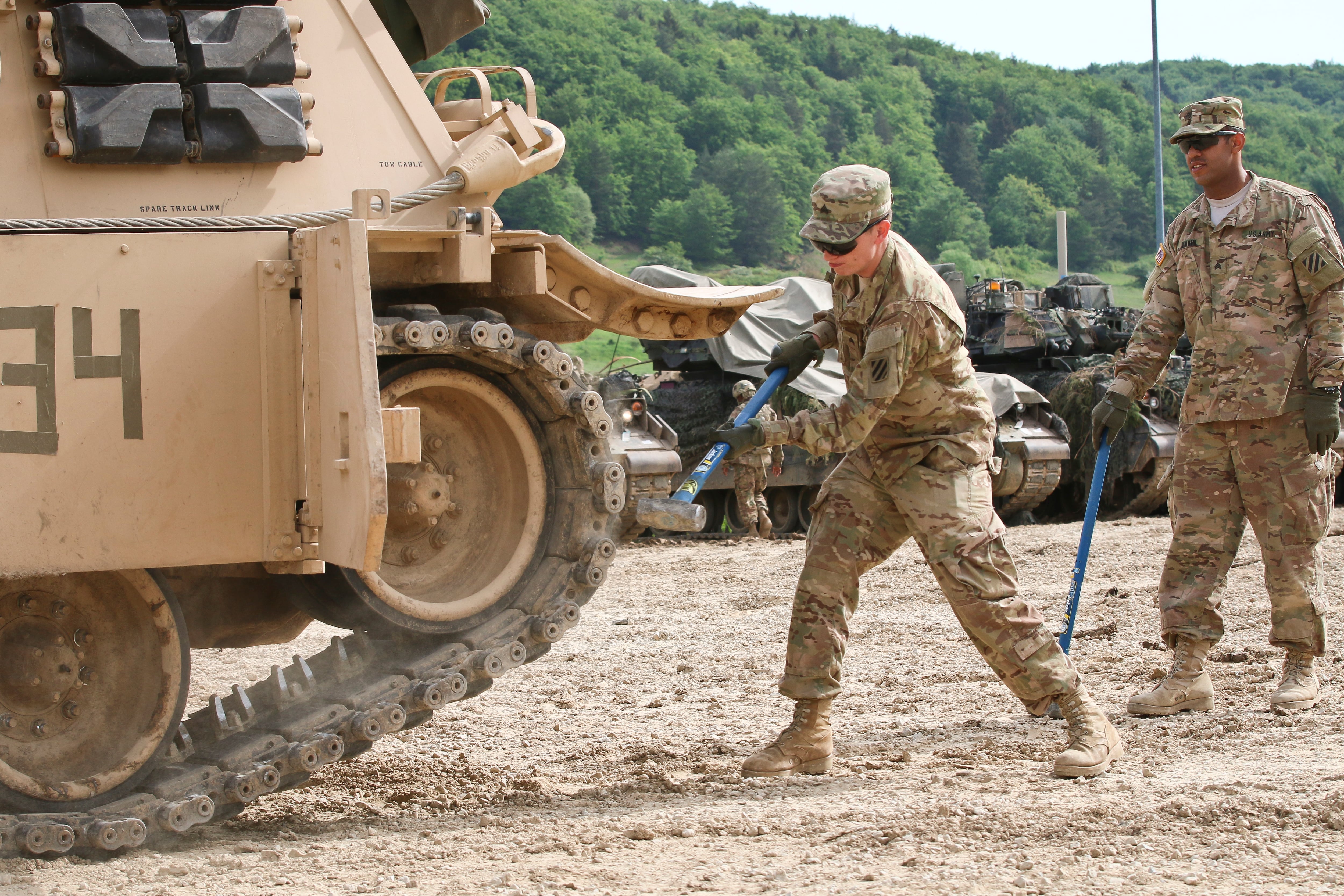
Chief Warrant Officer 2 Trevor Nelson, who at the time was a sergeant first class leading maintenance for 1-66′s Bradley company, and other Iron Knights described parts backlogs that meant some tanks faced long delays before repair. That made the unit lean even harder on its functional vehicles and on its soldiers. Sometimes the “burnt out” maintainers would resort to visiting auto parts stores and buying common parts on their own dime.
Sometimes the soldiers designated “hangar queen” vehicles, which were awaiting major repairs with long lead times. If a part breaks on a tank, soldiers raid the hangar queen for parts, stressing the mechanics who must both swap the borrowed part and install the new one once it arrives. While Army regulations allow such swaps, unit leaders are directed to reduce such “controlled exchanges” between vehicles.
“I remember the maintenance teams being exhausted 99% of the time and just having zero hope for a let up,” said Shiemke, a Bradley maintainer. “Everything seemed like an emergency. But if everything’s an emergency, then nothing is an emergency.”
Crews and officers responsible for overseeing maintenance also felt the strain.
A former company executive officer worked six consecutive Saturdays before a deployment in the maintenance bays, he said.
“The two months [before deployment] where I’m trying to spend as much time as I can with my wife, half of those weekends were robbed from me,” the officer said.
Col. Roger Cabiness II, an Army spokesperson, acknowledged parts backlogs in a statement to Army Times. He said a “working group” between Army Materiel Command and “other stakeholders” aims to reduce such backorders. Cabiness also said that “advanced manufacturing, data analytics and other innovative solutions” will combine to ease the difficulty of getting the right parts at the right time.
A former 1-66 company executive officer said leaders directed him to “play musical parts” so training could continue, which he said “took a psychological toll” on the overburdened maintainers.
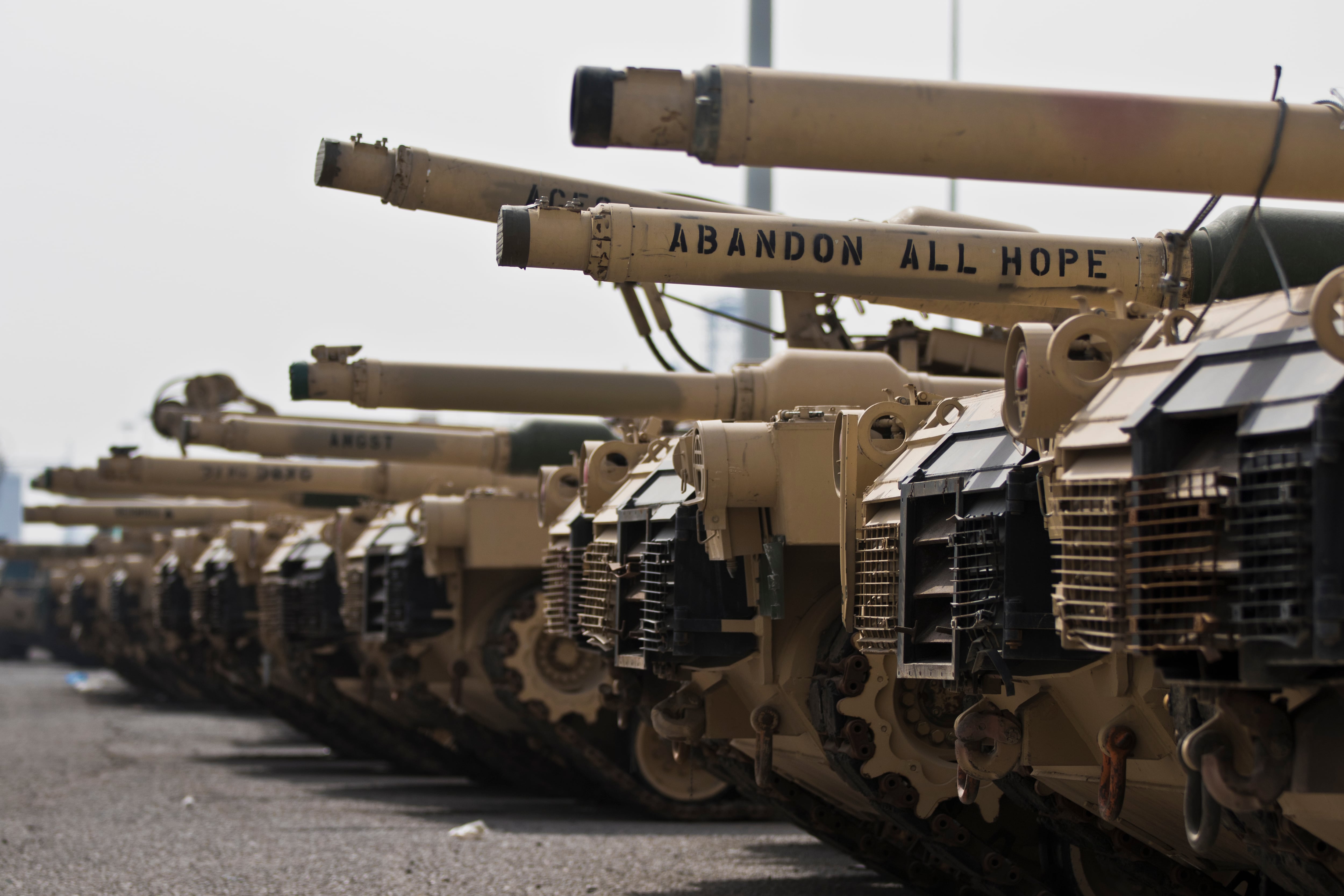
It also discouraged the soldiers, who affectionately name their vehicles and emotionally bond with them. A crew unlucky enough to need major repairs would often sit back and watch the unit raid their beloved tank like a spare parts bazaar.
Military suicide prevention officials have trouble seeing the forest for the trees, some mental health experts argue.
In recent years, psychologist Craig Bryan of Ohio State University has critiqued the military’s traditional approach to suicide prevention: detecting and treating mental illness in individual service members, with a focus on crisis intervention. He and others have found that the “majority” of soldier suicides are not directly linked to mental illness.
“We waste so much money on machine learning and predictive analytics, stuff … geared toward [identifying] who’s going to kill themselves and when, but we’re never going to have an algorithm to do that,” Bryan said.
The former Air Force psychologist argued in his 2022 book, “Rethinking Suicide,” that the military’s suicide prevention efforts have largely ignored how sustained stress in troops’ daily lives can increase their suicide risk.
Bryan was also a member of the Defense Department’s 2022 Suicide Prevention and Response Independent Review Committee, which found that “training demands and requirements … [are] primary sources of stress, burnout and demoralization.” Other common stressors include shoddy computers, byzantine promotion policies, unsupportive leaders and poor housing.
For members of armor brigades, the operational tempo and long working hours in the maintenance bays add up, he said.
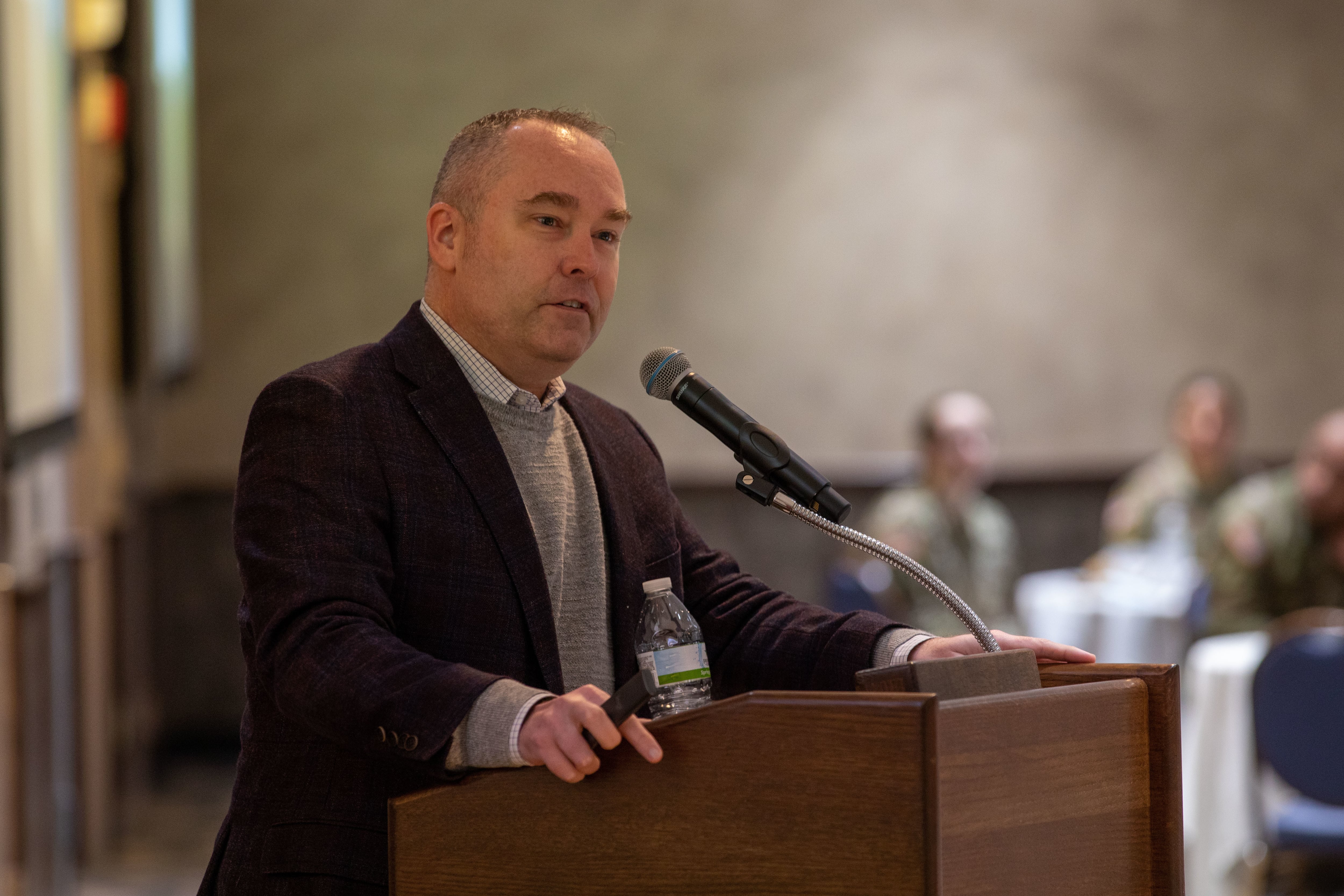
“It’s like death by 1,000 paper cuts,” Bryan said. “The damage starts to accumulate, and it becomes harder to resist bigger shocks to the system.” When a soldier exceeds their stress threshold from daily difficulties and acute strains (such as finances, or the end of a relationship), they are then more vulnerable to sudden suicidal behavior.
Carrie Shult, the Army’s suicide prevention program manager, said emerging research — including Bryan’s work for the Pentagon — recently led the service to begin studying “systemic [suicide] risk” factors and explore ways to reduce them. But she cautioned that “chang[ing] the way we think about the problem takes some time.”
Both she and Lane said their teams struggle to measure soldiers’ quality of life. Army headquarters officials cannot easily quantify how much time soldiers spend away from home (which the Army’s top noncommissioned officer has also noted), whether their training schedules are predictable or how their work hours impact their relationships and sleep.
Cabiness detailed a series of Army headquarters-led suicide prevention initiatives, but none were focused specifically on armor units’ systemic risk factors. The list also included a patchwork of local efforts, such as a Fort Bliss brigade making soldiers pledge not to kill themselves.
Wormuth highlighted three division-level suicide prevention initiatives in her statement, including the Alaska-based 11th Airborne Division’s “Mission 100″ program. These efforts, the Army secretary said, “are prioritizing engaged leadership and providing a range of resources [to] soldiers and their families.”
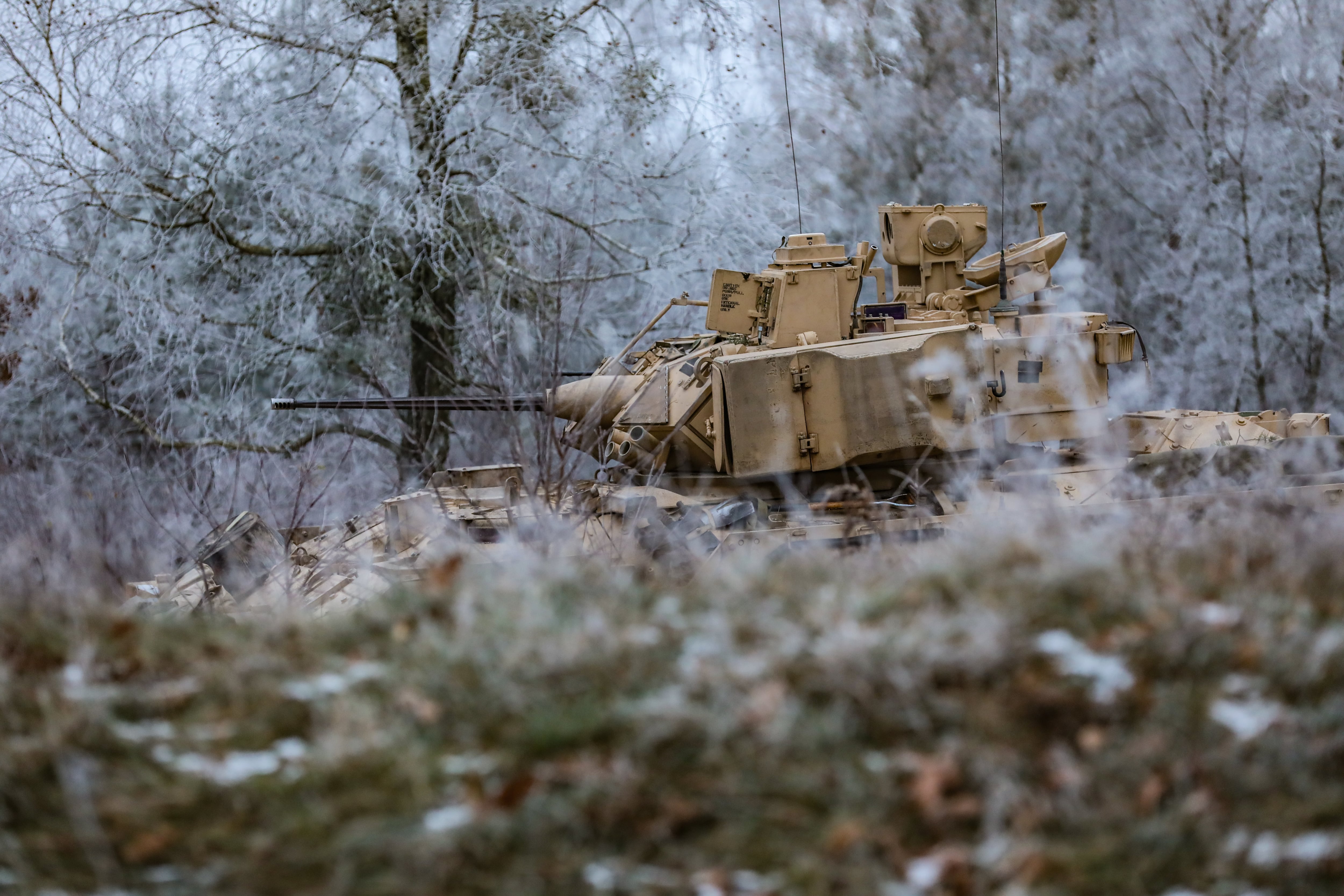
The Army is launching other efforts outside of the suicide prevention program. The 1st Cavalry Division recently developed training for new company command teams and battalion executive officers that includes instruction on how to run maintenance programs without running soldiers into the ground. Division commander Maj. Gen. Kevin Admiral said the effort, which begins this summer, aims to “bring the stress down and add more predictability to our schedules for soldiers.”
Between the deaths, the training pace and the maintenance, many soldiers from 1-66 struggled to maintain their personal relationships. Others lost faith in the Army and asked whether the peacetime mission was worth the cost.
Several Iron Knights divorced.
“My wife at that time, she couldn’t take … me being gone for 16 hours a day,” Herzing, a tank commander, said. “I’d come home and we’d fight because I wasn’t spending time with her.”
“I’ve never seen more burnout in a unit before,” said Pattan, who also divorced. He said he’s grateful to have worked for leaders who “would die for their soldiers,” but he believes the Army must confront the “fundamental” problems facing tank brigades. He described the armor brigade grind as more difficult than his time in the 82nd Airborne Division, which included a 2019 deployment to Afghanistan.
The medic resisted seeking mental health treatment until December 2021, when he first saw a Fort Carson therapist. Since then, he has kept weekly appointments, attending them via phone during the unit’s 2022 deployment to Europe. He wants junior soldiers to see that it’s okay to need help for the stresses of Army life.
“The Army’s overall mission was readiness,” recalled one officer. “Well, after a few years … being ready isn’t enough to keep you going.”
Abrams, the retired four-star general, explained why the pace intensified. He retired in 2021 after stints leading Forces Command, which oversees most of the Army’s combat units while they prepare for deployments, and U.S. Forces Korea, the standing American command in South Korea.
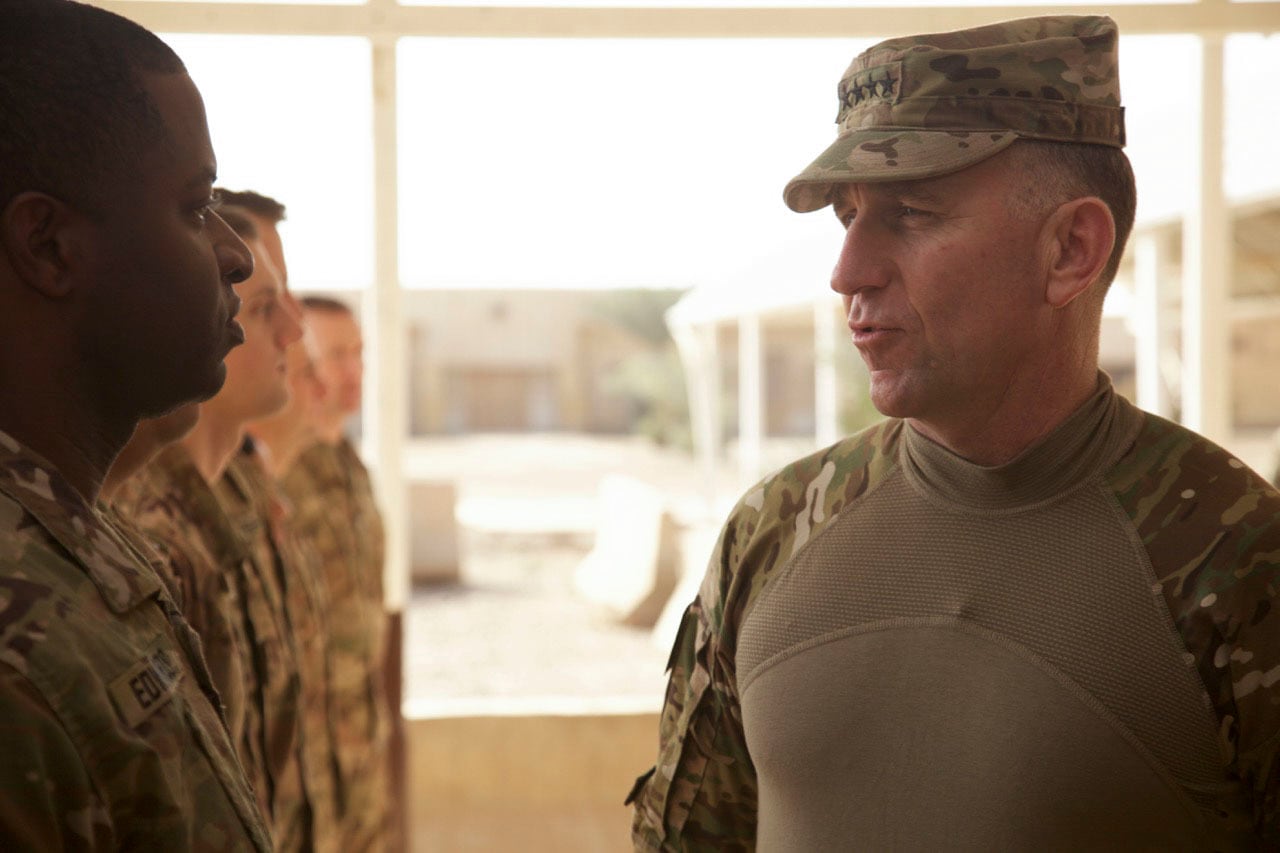
He argued that the demand for armor brigades was enabled by budget-driven cuts to units stationed overseas, leading the service to deploy tank brigades to Korea on one-after-the-other rotations beginning in 2013. Then Russia’s aggression against Ukraine led policy makers to establish a similar ongoing armor deployment to Europe — Operation Atlantic Resolve — in 2016. Combined with consistent Central Command deployments, these requirements created a crushing cycle: a brigade would deploy for nine months, return home, and then immediately launch into 18 months of training for their next deployment.
Although the Army tried to reduce overseas requirements for tank brigades, the moves came after a surge in demand for armor units forced four of the service’s 11 active duty armored brigades to be deployed simultaneously. Two active duty tank brigades are currently overseas.
The path to reduce such stress is unclear. In the wake of Russia’s expanded invasion of Ukraine, countries such as Lithuania and Poland have reiterated their desire for permanently based U.S. tanks.
Returning to overseas basing, which Army experts have previously recommended, could end rotational deployments for good. But Cabiness, the Army spokesperson, cautioned that such a move would require a series of military and political approvals from the U.S. and possible host countries.
Thus the Iron Knights will deploy to Europe once again this spring.
Herzing and his new significant other will become parents during this rotation.
Pattan will stay stateside and expects he will receive a medical retirement this summer. “I don’t think that the battalion is healed, even though a lot of those people are no longer here,” he said.
Some soldiers argued the mission may not be worth its cost.
Nelson, the former maintenance chief, said that when the suicides occurred, “it never felt like their deaths were a priority” for the unit.
“We just kept chugging along, which I get we’re supposed to do as an Army, but we were just training,” Nelson said. “Not even training to go to war. We just trained to go to training exercises so we could train to go on training rotations.”
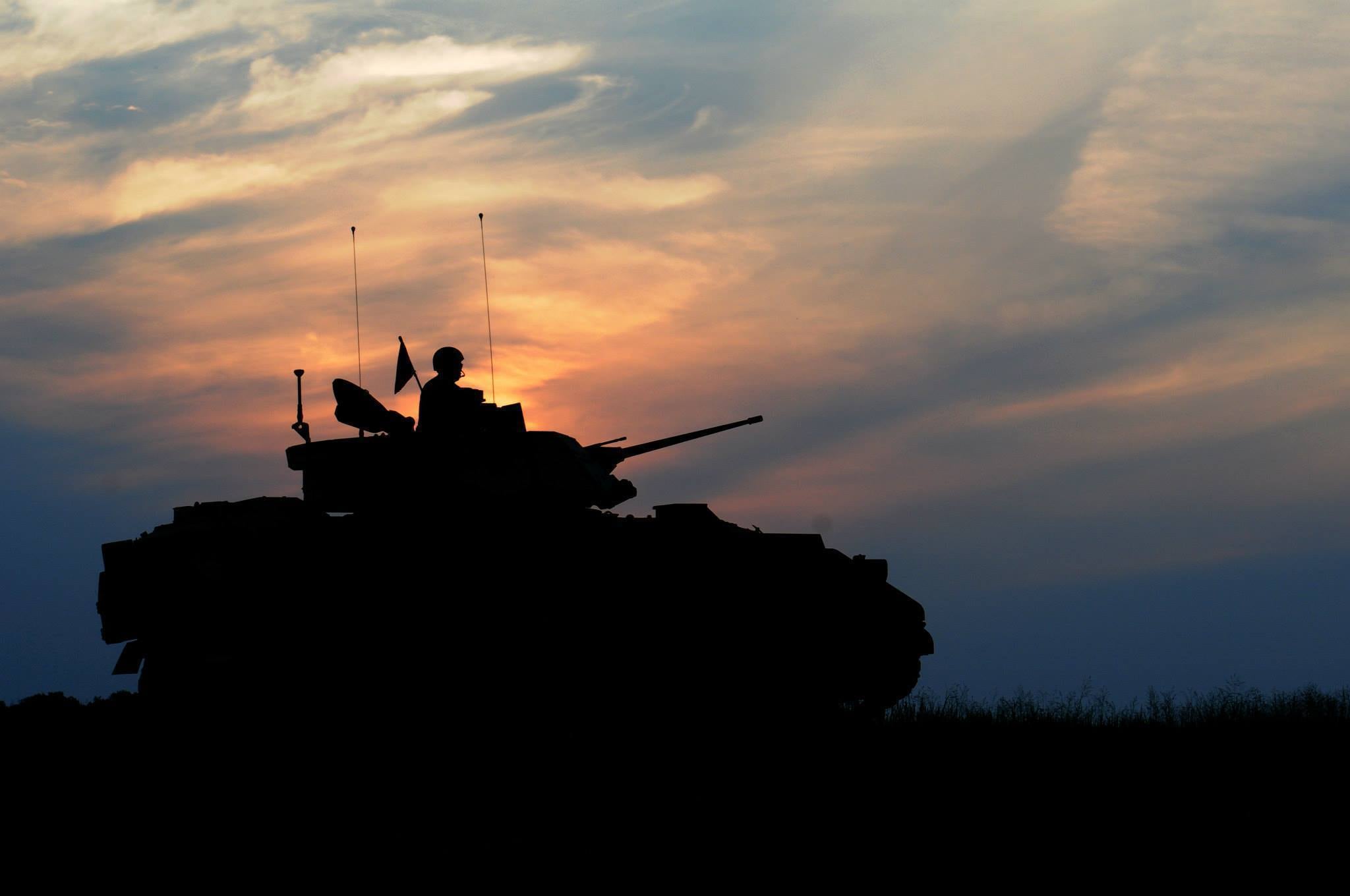
Wright plans to leave the active duty force and return to the National Guard.
“What is the mission that we’re killing ourselves for?” he asked. “The [armor brigades] weren’t at war. They were training in Europe, and they were training in Korea, and they were training in Kuwait, and they were babysitting [bases] in Iraq.
“Leaders will talk about taking it personally when they make a decision [in combat] and it results in somebody’s death. But we’re making decisions every single day that are resulting in people dying, and no one wants to take responsibility for it.”
Meanwhile, tank brigades run a familiar treadmill, powered by a decade’s worth of decisions by the Army, the Defense Department and policymakers.
The Iron Knight battalion returned from an eight-month deployment to Poland in December 2022. If the Army met its dwell-to-deployment ratio goal, soldiers who completed that rotation would not deploy again until December 2024.
The battalion’s lead element deploys next week.
Davis Winkie covers the Army for Military Times. He studied history at Vanderbilt and UNC-Chapel Hill, and served five years in the Army Guard. His investigations earned the Society of Professional Journalists' 2023 Sunshine Award and consecutive Military Reporters and Editors honors, among others. Davis was also a 2022 Livingston Awards finalist.
